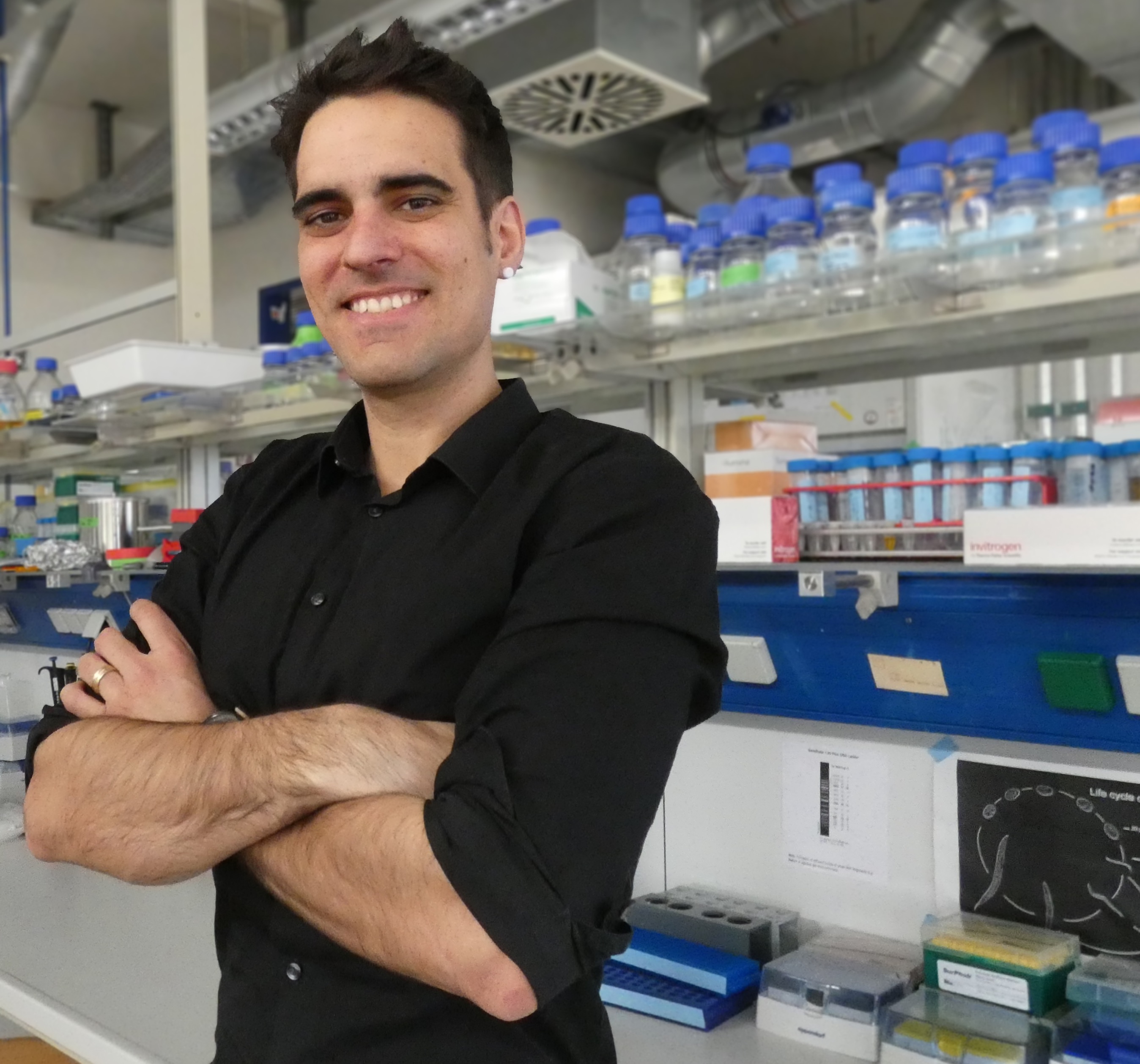Michael Werner
Assistant Professor of Biological Sciences
Developmental (Phenotypic) Plasticity, Chromatin, Epigenetics, Gene Regulation

Molecular Biology Program
Education
B.S. Stetson University
Ph.D. University of Chicago
Research
Different environments can elicit distinct phenotypes from a single genotype, referred to as phenotypic (developmental) plasticity (Stearns, 1989; West-Eberhard, 2003). Social insects have made use of this ability to establish elaborate caste systems, while other animals and plants can modify particular traits to match their environment; such as the microcrustacean Daphnia which develops structural ‘helmets’ in response to predator cues. Studies on these and other model systems have made significant contributions toward understanding the ecological and evolutionary implications of phenotypic plasticity. However, the proximate molecular mechanisms that transmit environmental information into physiological, behavioral, and morphological changes are still largely unknown. This is a key missing feature in our understanding of development, including many processes that affect human health and well-being, such as learning, adaptive immunity, and the effects of diet and exercise. We take an integrative approach to identify the epigenetic mechanisms that regulate phenotypic plasticity, and their potential roles in ecology, evolution and human health.
References (Selected Publications)
- Brown, A.L., Meiborg, A.B., Franz-Wachtel, M., Macek, B., Gordon, S., Rog, O., Weadick, C.J., Werner, M.S. Characterization of the Pristionchus pacificus "epigenetic toolkit" reveals the evolutionary loss of the histone methyltransferase complex PRC2. Genetics. 2024 May 7;227(1):iyae041. https://doi.org/10.1093/genetics/iyae041
- Jung, J., Loschko, T., Reich, S., Rassoul-Agha, M., Werner, M.S. Newly identified nematodes from the Great Salt Lake are associated with microbialites and specially adapted to hypersaline conditions. Proc Biol Sci. 2024 Mar 13;291(2018):20232653. http://doi.org/10.1098/rspb.2023.2653
- Werner, M.S., Loschko, T., King, T. et al. Histone 4 lysine 5/12 acetylation enables developmental plasticity of Pristionchus mouth form. Nat Commun 14, 2095 (2023). https://doi.org/10.1038/s41467-023-37734-z
- Werner, M.S.*, Claaßen, M.H.*, Renahan, T.*, Dardiry, M., and Sommer, R.J. (2018). Adult Influence on Juvenile Phenotypes by Stage-Specific Pheromone Production. iScience 10, 123–134.
- Werner, M.S., Sieriebriennikov, B., Prabh, N., Loschko, T., Lanz, C., and Sommer, R.J. (2018). Young genes have distinct gene structure, epigenetic profiles, and transcriptional regulation. Genome Res. 28, 1675–1687.
- Werner, M.S., Sieriebriennikov, B., Loschko, T., Namdeo, S., Lenuzzi, M., Dardiry, M., Renahan, T., Sharma, D.R., and Sommer, R.J. (2017). Environmental influence on Pristionchus pacificus mouth form through different culture methods. Sci. Rep.7, 7207.
- Werner, M.S., Sullivan, M.A., Shah, R.N., Nadadur, R.D., Grzybowski, A.T., Galat, V., Moskowitz, I.P., and Ruthenburg, A.J. (2017). Chromatin-enriched lncRNAs can act as cell-type specific activators of proximal gene transcription. Nat. Struct. Mol. Biol. 24, 596–603.
